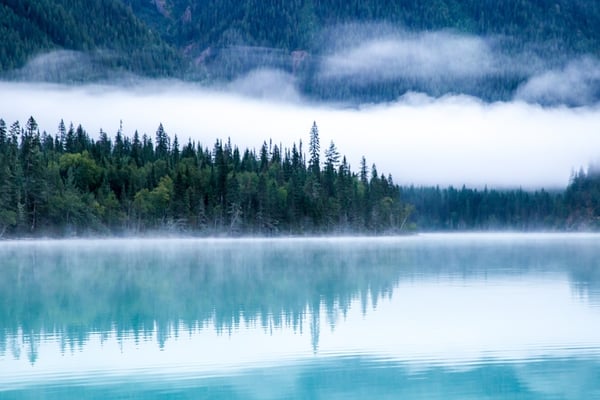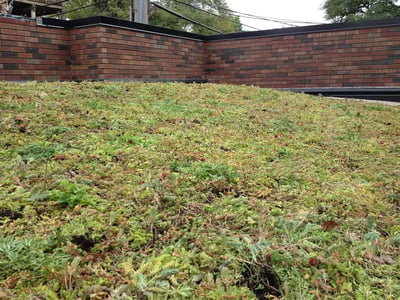
Sustainable design is more than a buzzword; it’s a way of thinking about every action we take with the goal of reducing harm to Earth, its environment and its peoples.
Take a quick gander at the web and you’ll find dozens of firms in your area promising sustainable design. Of buildings. Of cities. Of landscapes. Of forests and wetlands.
Some of these firms really do follow sustainable design principles, prioritizing long-term resilience and the benefits to nature and people at their core.
Others, however, give the term a superficial treatment. They may source environmentally friendly products, but not ensure those products are the best for a site. They might address stormwater needs, but fail to choose the right infrastructure to manage it.
We’re certainly not claiming that green products and stormwater management are bad things; far from it. But until we look at the complete picture, we’re failing in our goals of creating sustainable green infrastructure for the future.
Want to avoid that? Of course you do.
Here’s a better way to think about it.
What Is Sustainable Design?
 Sustainable design is an increasingly venerated approach to housing, commercial spaces, hospitals, mega infrastructure and landscaping. Unfortunately, not everyone understands what it truly means to prioritize sustainability in design.
Sustainable design is an increasingly venerated approach to housing, commercial spaces, hospitals, mega infrastructure and landscaping. Unfortunately, not everyone understands what it truly means to prioritize sustainability in design.
When we think sustainable, we think something that lasts in its current form. That’s true, but it’s not the whole picture.
“Sustainable design seeks to reduce negative impacts on the environment, and the health and comfort of building occupants, thereby improving building performance,” says the U.S. General Services Administration.
They add that “The basic objectives of sustainability are to reduce consumption of non-renewable resources, minimize waste, and create healthy, productive environments.”
To do this, we must:
- Consider what a specific site can bear
- Use that site to its fullest potential
- Minimize the use of non-renewable energies
- Maximize environmentally friendly products
- Conserve water systems
- Manage stormwater and reduce its environmental load
- Create structures that maintain sustainability long-term
In other words, sustainable design is an approach to building, landscaping, gardening and infrastructure that prioritizes results that can maintain balance, health and usefulness long-term.
Simple sustainability, however, isn’t enough. If we want to build strong ecologies in urban and rural areas, we need to take resiliency into account.
Understanding Resiliency for True Sustainable Design
 Resiliency is a critical but often-overlooked component of sustainability. Today, it’s more and more important to take resiliency, or the ability to adapt quickly to change, into account when considering sustainable design elements.
Resiliency is a critical but often-overlooked component of sustainability. Today, it’s more and more important to take resiliency, or the ability to adapt quickly to change, into account when considering sustainable design elements.
To return to the example of stormwater management, let’s consider which systems have the capacity to adapt easily and continue functioning long-term without new inputs.
Gray infrastructure – huge dykes and manmade waterways – may help route and treat water in the short term, but it requires massive inputs of raw resources to build and maintain. In a rapidly changing climate, it may grow outdated before we can do anything about it.
On the other hand, green infrastructure works with nature to adapt more quickly to changes. The natural world has ways of protecting itself (and us), if we let it do its job. That’s why it’s so important to turn to animals and natural systems when we design, because only then can our structures bounce back in the face of accelerating change.
The environment isn’t the only consideration when it comes to sustainable design, though.
Sustainable Design Beyond the Environment
 Designing sustainable structures and landscapes means more than treating the environment well. We must also consider people.
Designing sustainable structures and landscapes means more than treating the environment well. We must also consider people.
As Keith Bowers, Fellow of the American Society of Landscape Architects and founder of ecological design firm Biohabitats, explains, sustainable design must take cultures and economies into account as well as the environment. Only when all three overlap have we created actual sustainable systems.
It’s not enough to make sure the three intersect, however: “Because this weak model of sustainability places equal weight on each of the three elements, many of the projects considered ‘sustainable’ would not be considered resilient,” says Bowers. “They might balance economic, cultural, and environmental performance, but be unable to accommodate change and recover quickly.”
Luckily, Bowers says, we can address that through changing this overlap model to one of concentric circles. (See the post to examine the visual differences.) If we focus on ensuring the environment can bear our actions, then that will naturally encompass more stable cultures – they’re not suffering damage from human actions – and stronger economies that can work within the bounds of human progress.
That said, it’s not enough to assume environmental building models will take care of all peoples. A big problem in today’s building world, for example, is that new green initiatives tend to take place in wealthy communities rather than disadvantaged ones. That’s also something we need to address.
Adjusting Our Approaches to Sustainable Design Today
It’s a lot to think about, we know. It is, therefore, better to start on a smaller scale today.
If you’d like to speak to sustainable design experts here at Ecogardens, we invite you to get in touch today. Whether you’re designing a new green roof, restoring a wetland or natural area, or simply want to make your space more sustainable, we can help.
All you have to do is ask.

